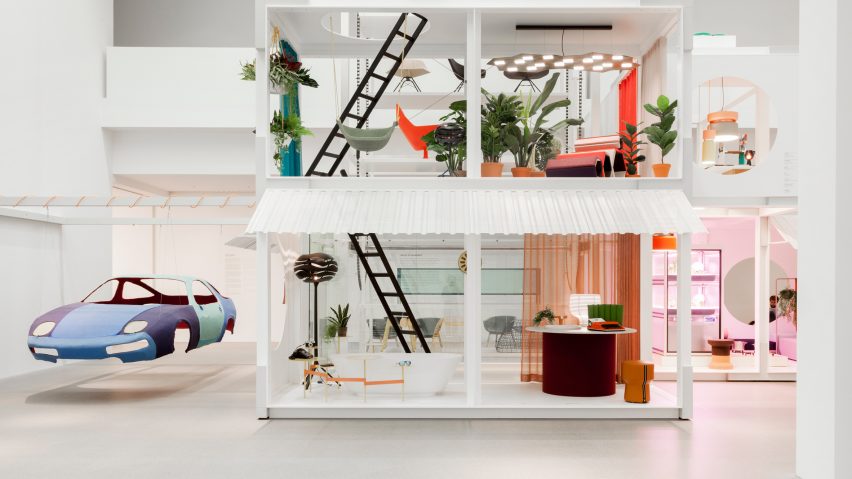
Werner Aisslinger imagines a future of robots and plants with House of Wonders exhibition
This installation by German designer Werner Aisslinger predicts a whimsical, sustainability-focused future that combines domestic life with farming and robotics.
Aisslinger created the House of Wonders exhibition at the Pinakothek der Moderne in Munich. Housed in the Paternoster Hall, it is divided into zones that explore different aspects of what the future might hold.
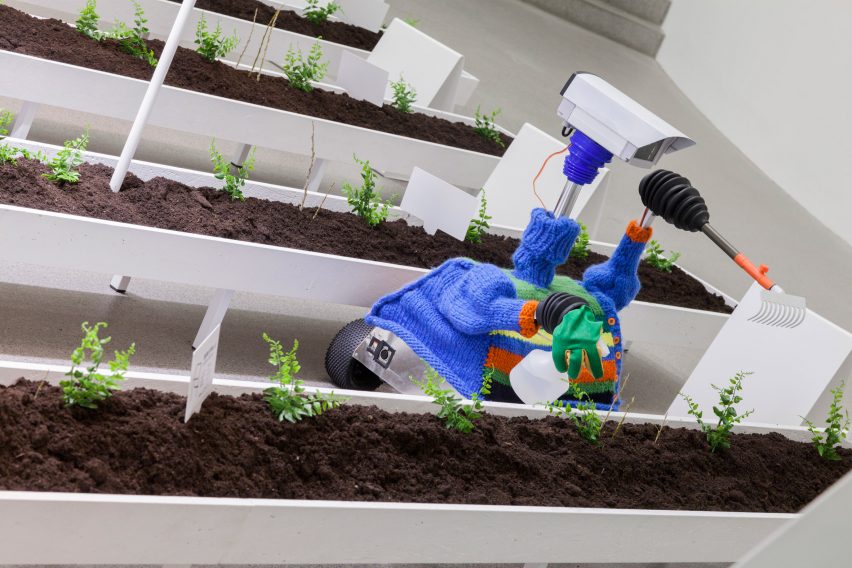
An agricultural section features a miniature farm, tended by a gardening robot with a knitted jumper and a CCTV head.
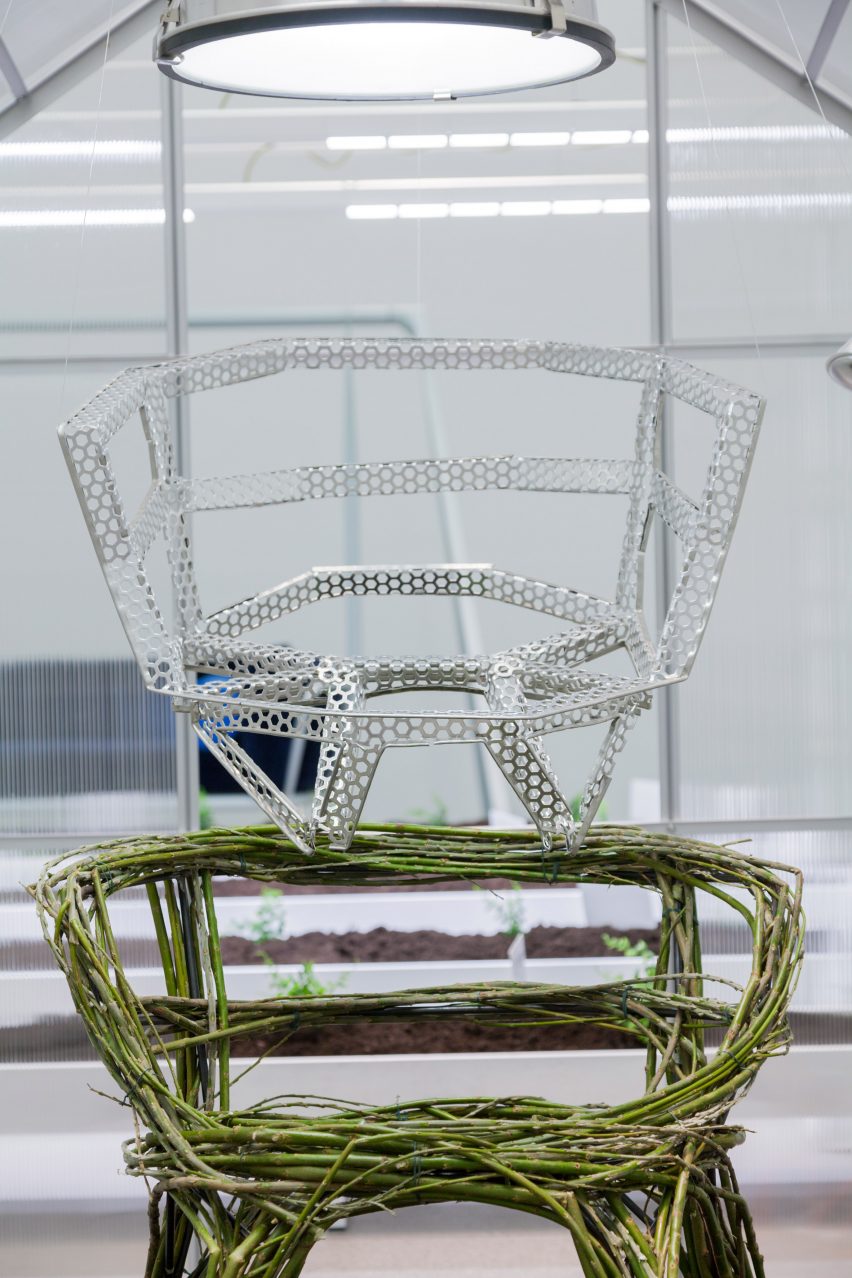
Nearby is a chair that appears to have been grown in a greenhouse – a project the designer first unveiled in Milan in 2012. It aims to prompt questions about how the furniture of the future will be produced.
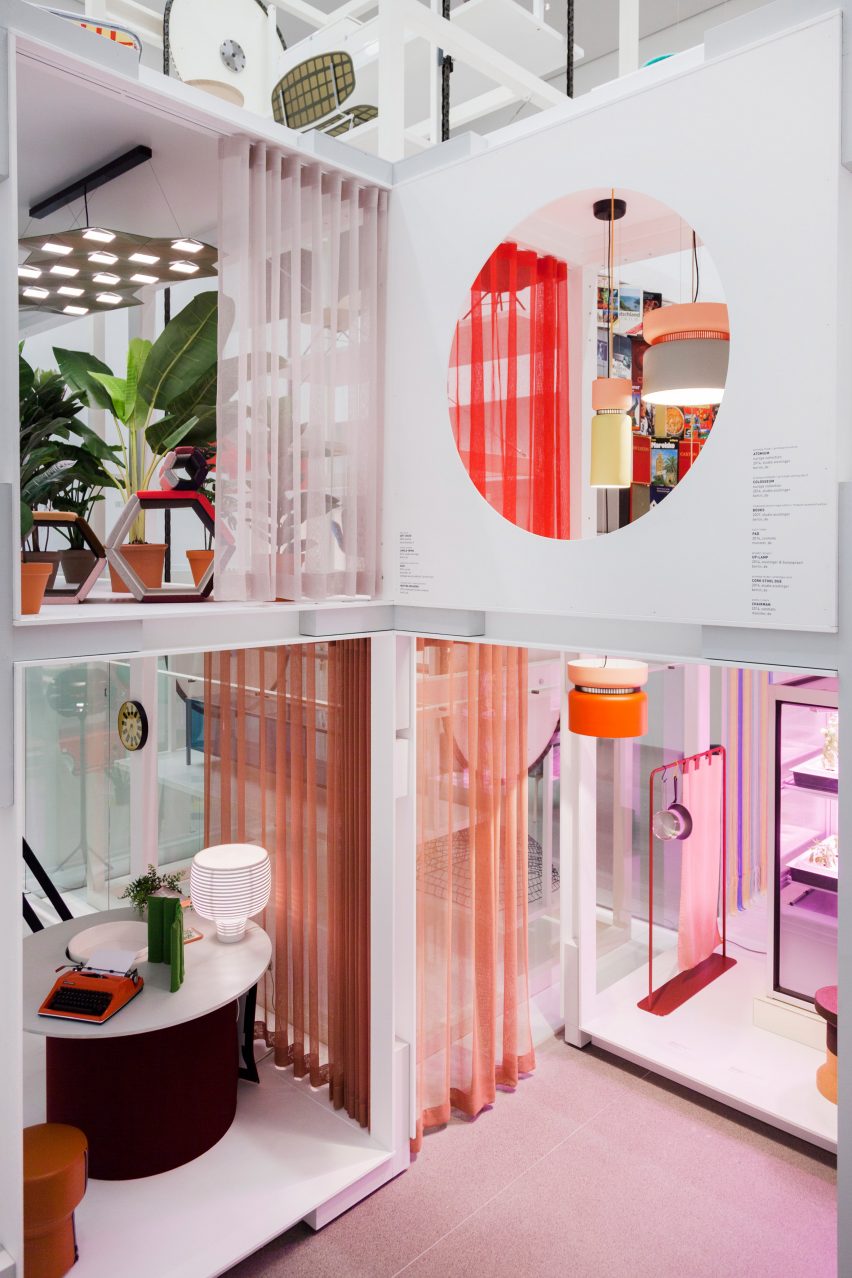
The main section of the exhibition is contained inside a two-storey house. Here, another miniature farming section highlights the possibilities of indoor agriculture.
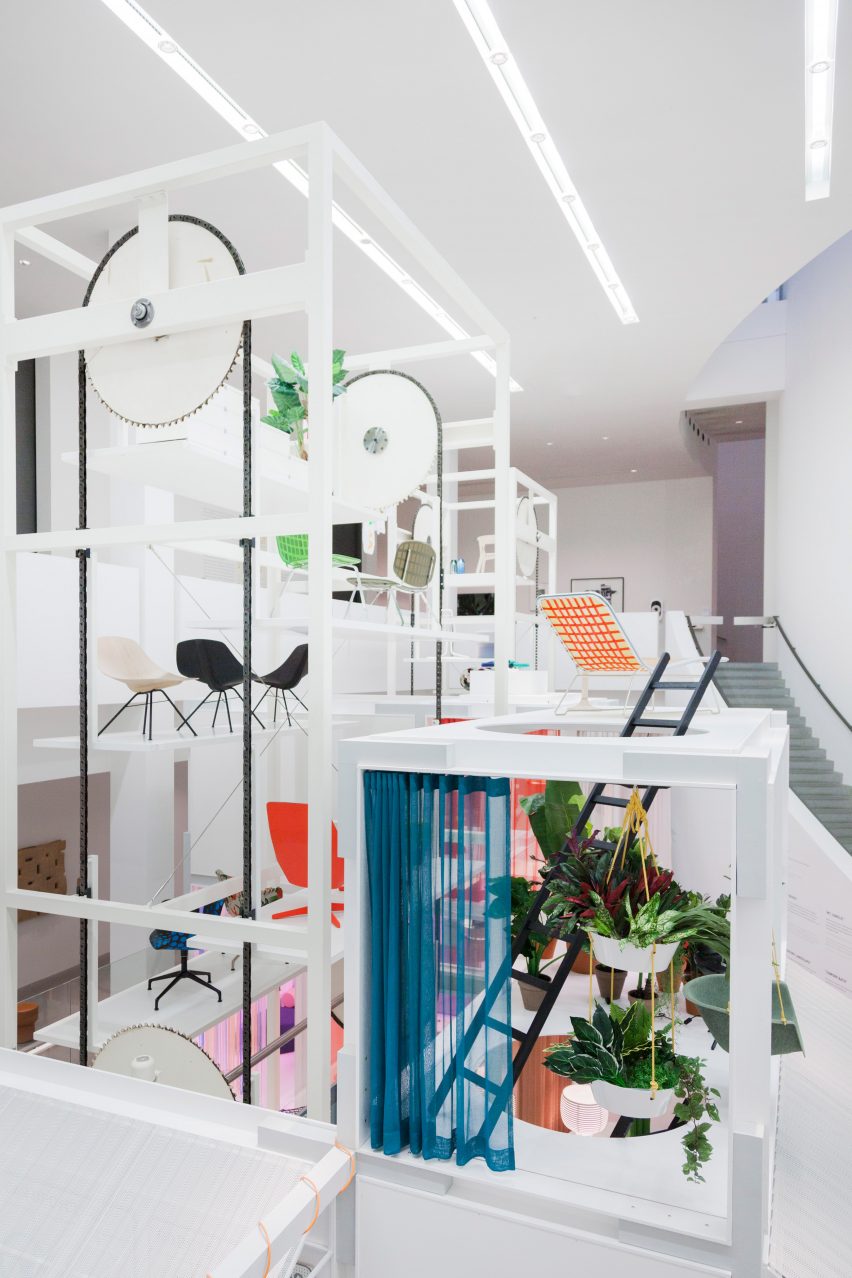
The house, which features glass walls, is built around a pair of constantly moving paternoster lifts, which show a rotating collection of furniture and homeware.
The house's floors are connected by ladders placed in circular holes rather than staircases.
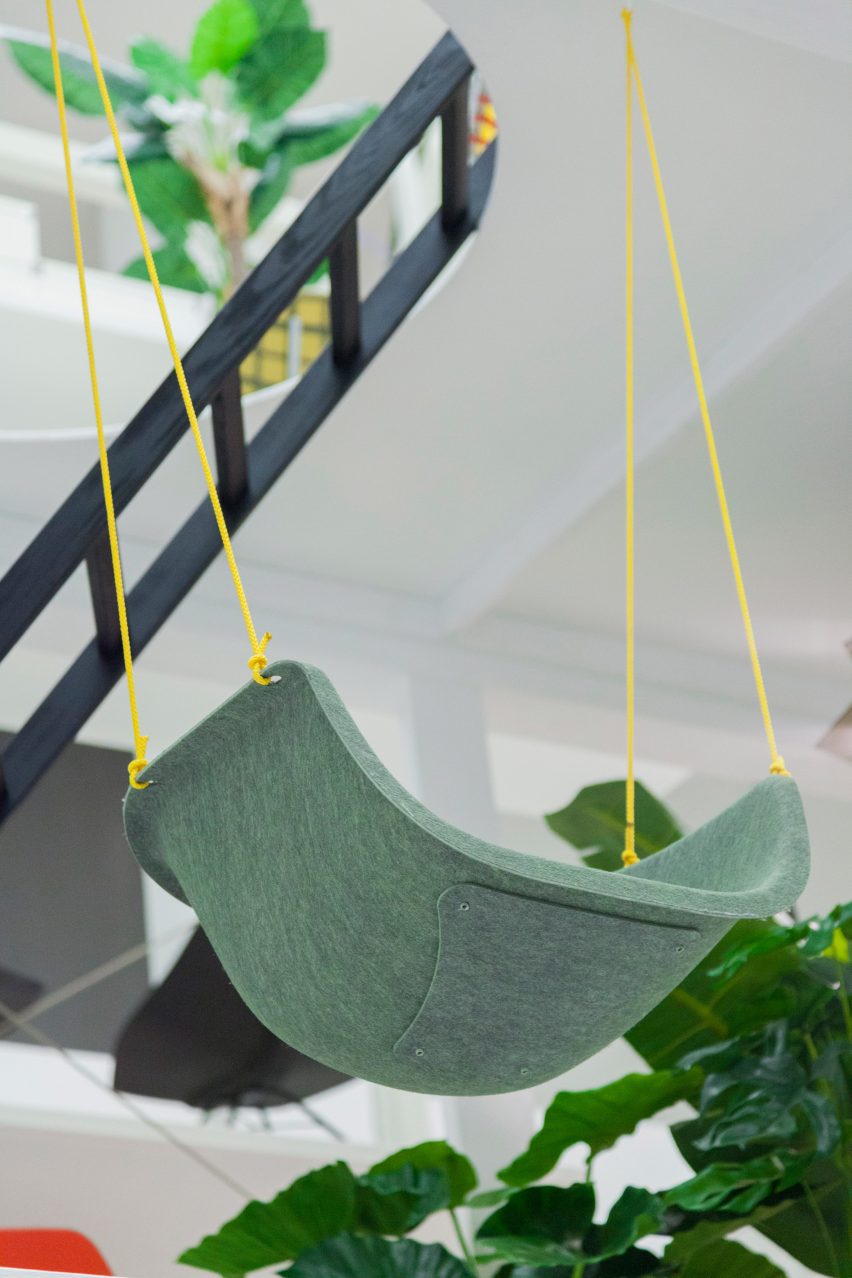
Many of the pieces in the building were designed by Aisslinger himself and have a focus on sustainability.
His Coral seating – made from felt and polycarbonate hexagons – is featured, alongside a chair made from hemp and a bookshelf constructed from the owner's own novels.

The sustainability theme continues into the garage area, which features the suspended body of a car that has been covered in textiles to suggest that in the future people will upcycle cars rather than buying new models.
The exhibition continues until September 2017.
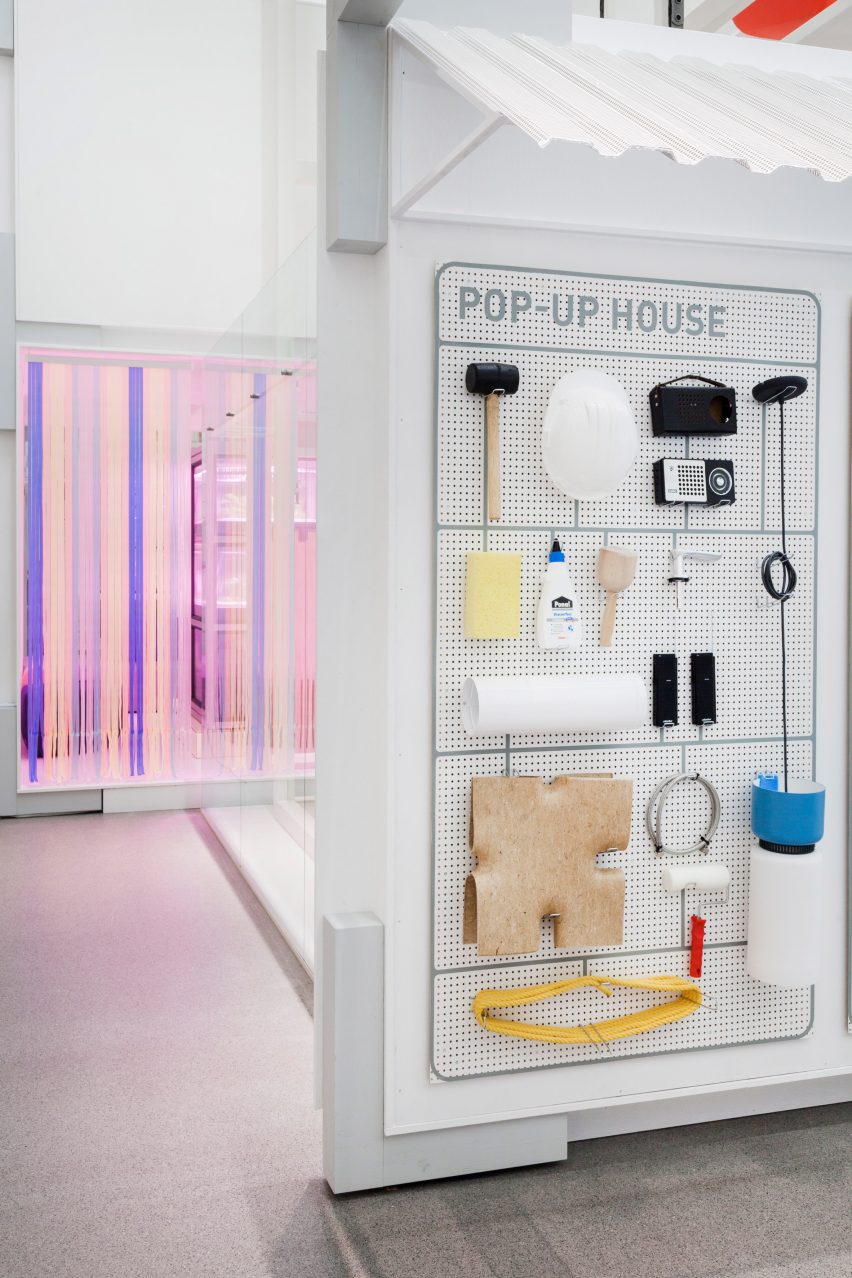
Aisslinger, who has created pieces for Moroso and Flötotto, also recently designed an installation for Danish brand Kvadrat, which featured a cabin covered in colourful textiles.
Photography is by Patricia Parinejad.